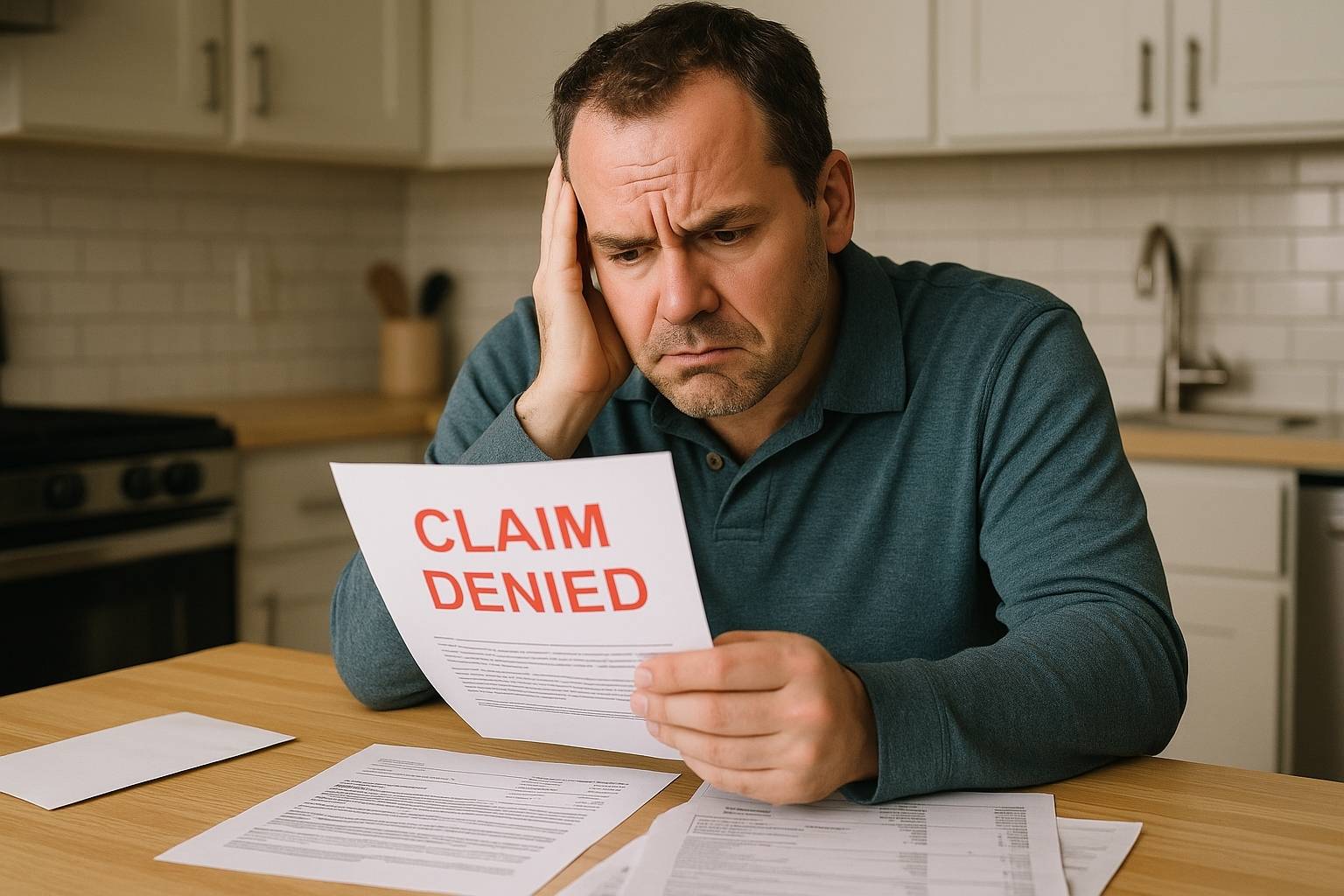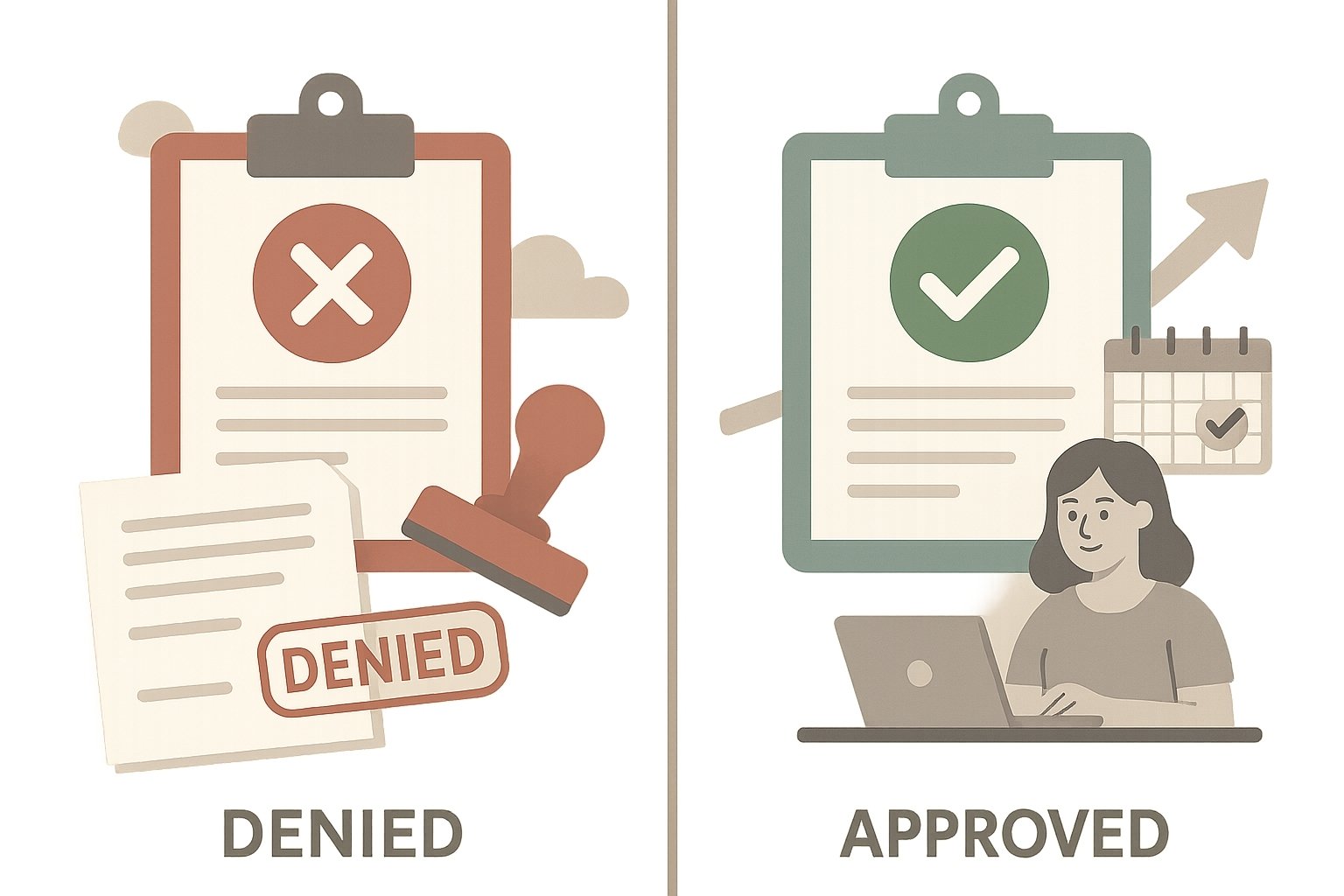Receiving a denial on your car accident claim can feel like a punch to the gut, especially when you’re already dealing with pain, bills, and stress. But a denied claim isn’t the end. Many legitimate claims are initially rejected for technical, procedural, or documentation issues, and many can be successfully appealed or re-filed. Whether you filed with your own insurer or the at-fault party’s, understanding your next steps can make a huge difference in recovering what you’re owed.
In this guide, we break down why claims get denied, how to respond, and what you can do to turn a “no” into a successful outcome.

Unfortunately, based on your response, you may not qualify to file a claim. Most personal injury cases must be filed within two years of the accident, in accordance with the statute of limitations. Please consult with a licensed attorney to explore any possible exceptions or additional options.
To fix the issue, you need to understand it. Claim denial letters often contain vague or technical reasons, but almost all fall into a few common categories.
Most insurance policies require you to report the accident within a specific time frame, sometimes within just a few days. If you delay notifying your insurer or take too long to submit your claim, the company can reject it for non-compliance, even if the claim is otherwise valid. Always check your policy’s reporting requirements and act quickly after a crash.
Insurers expect detailed documentation. Without it, they may argue they can’t verify your losses. Missing police reports, unclear medical records, and lack of photos or witness statements are all common reasons for denial. For a detailed checklist of what to submit, see our guide on what documents insurers expect to see and make sure nothing critical is missing.
If your coverage was expired at the time of the crash, or if the type of accident falls under a policy exclusion, you may get denied. This includes situations like unauthorized drivers, business use of personal vehicles, or excluded drivers listed on the policy. If you’re unsure, learn what your insurance policy really covers so you can spot potential issues.
When insurers can’t agree on who was at fault, or if there’s conflicting evidence—they may deny the claim while the investigation continues. This is especially common when police reports are inconclusive. In these cases, knowing how to handle conversations with the insurance adjuster can help you present your case more effectively and avoid missteps.

A denial doesn’t mean your case is over. You have options and in many cases, strong ones.
Your first move should be reading the letter in full. Look for the reason for denial, any policy citations, and instructions for appeal. If the language is unclear, contact the claims adjuster and ask for a written explanation.
If you were denied for insufficient documentation, now’s your chance to fill in the gaps. That could mean obtaining new medical evaluations, photos, repair estimates, or statements from witnesses. If you’re not sure where to start, use our step-by-step claim documentation checklist to build a solid case.
Most insurers have a formal process to contest claim decisions. Submit a written appeal letter with all supporting evidence, clarify any misunderstood facts, and restate your position. Always keep records of your communications. If you want to understand your legal rights during this process, refer to the National Association of Insurance Commissioners consumer help center for more guidance.
If your appeal doesn’t succeed or if the damages are significant, it may be time to consult a personal injury attorney. A lawyer can interpret policy language, collect expert opinions, and negotiate directly with the insurer on your behalf. To learn when it’s time to involve an attorney, explore key signs you need legal support.

The best way to deal with a denied claim is to avoid it entirely. Many denials result from preventable missteps like submitting incomplete paperwork or missing deadlines. If you’re preparing to file or if you want to double-check your process, review our full guide on how to file your claim properly.
Additionally, make sure you're not unknowingly sabotaging your own case. From downplaying injuries to giving unclear statements, some of the most common mistakes are also the most costly. For more insight, check out what claimants often get wrong and how to stay ahead of these errors.
Sometimes, exhausting the insurance process isn’t enough. If you’ve done everything right and your claim is still being unfairly denied or lowballed, it may be time to file a personal injury lawsuit. This is especially true if the at-fault driver’s policy limits are too low to cover your expenses, or if bad faith behavior is involved. A skilled attorney can help you evaluate the viability of a lawsuit and pursue damages in court if necessary.
A denied claim doesn’t have to mean defeat. Most rejections can be appealed, re-filed, or challenged, especially when supported by strong documentation and legal guidance. Stay calm, stay persistent, and don’t assume the insurer’s first answer is final.
At MVAClaim.com, we connect you with experienced car accident attorneys who know how to handle denials and recover the compensation you’re entitled to. If you’re looking for a complete overview, our full guide to the claims process breaks everything down from filing to appeal. Start your free case review today. You pay nothing unless they win on your behalf.
Unfortunately, based on your response, you may not qualify to file a claim. Most personal injury cases must be filed within two years of the accident, in accordance with the statute of limitations. Please consult with a licensed attorney to explore any possible exceptions or additional options.